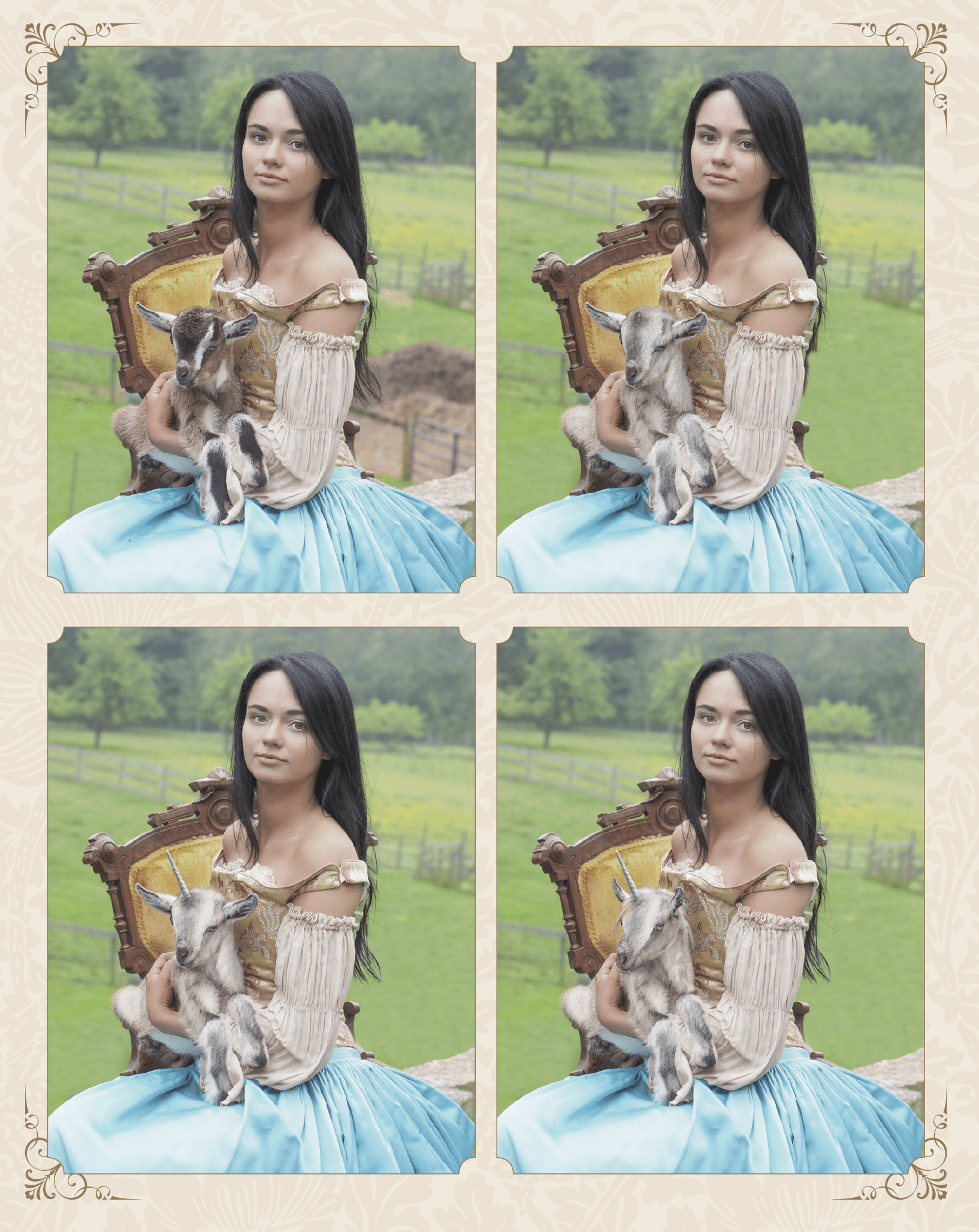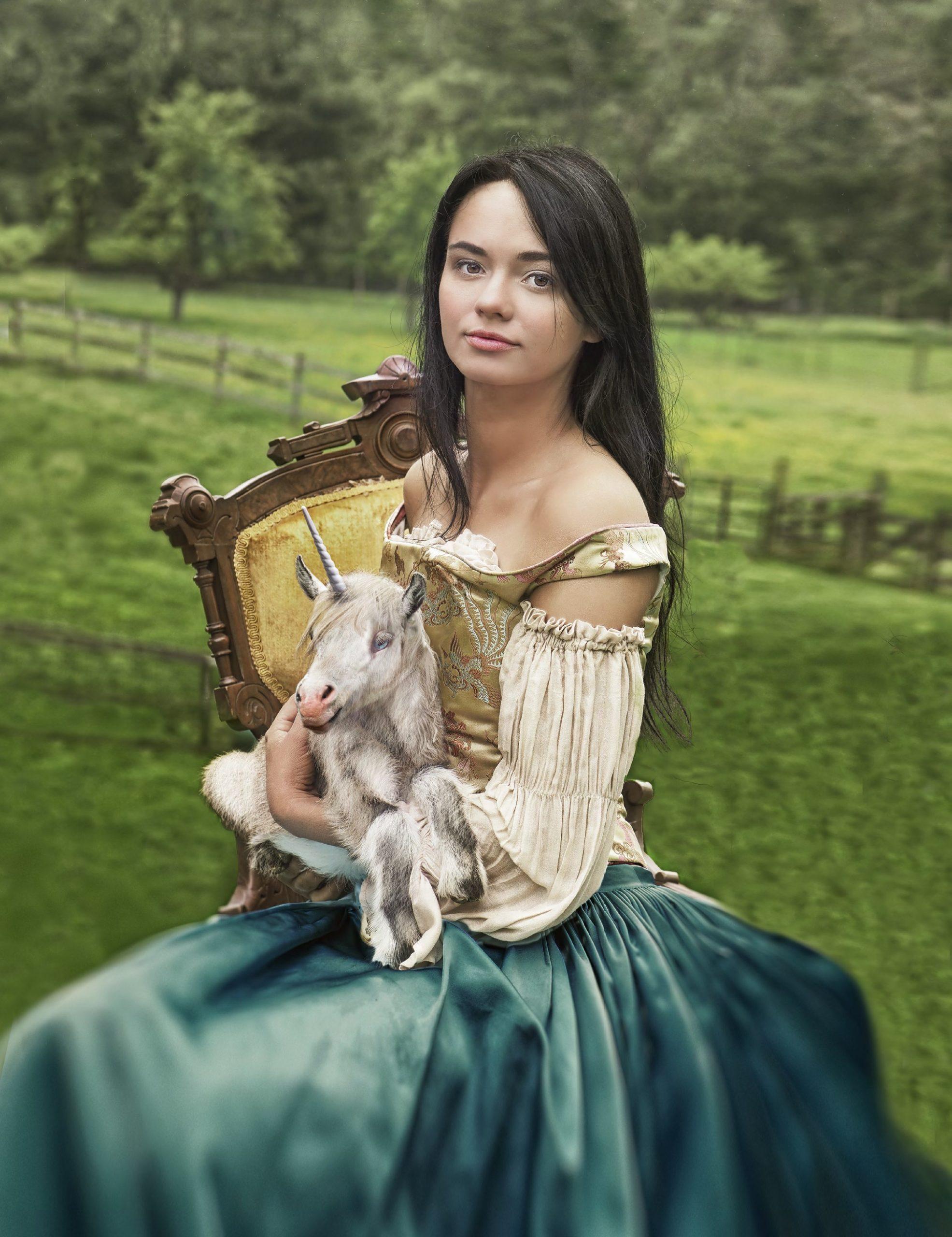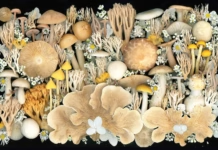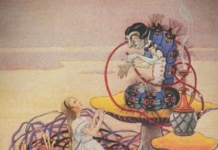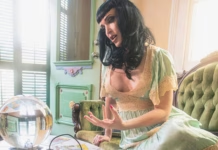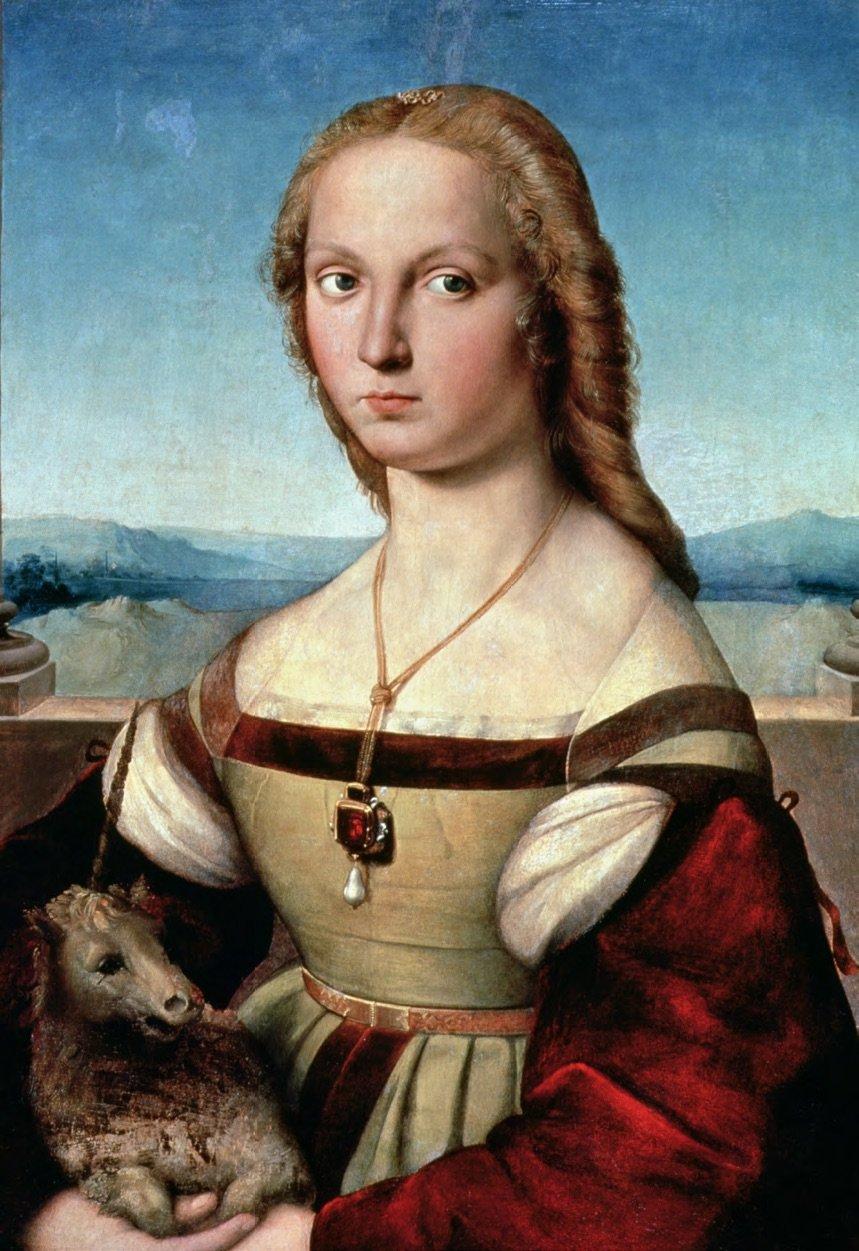Coming up with a cover image for The Unicorn Handbook posed a bit of a challenge. The two previous books in the series, The Faerie Handbook and The Mermaid Handbook, both featured wistful, ultra-romantic photos on the cover, the first by Kirsty Mitchell and second by Emma McEvoy. So The Unicorn Handbook needed a photo in the same vein. But despite popular belief, wistful ultra-romantic photographs of unicorns aren’t so easy to come by. And what does a real unicorn look like, anyway?
The obvious choice seemed to be to find a big white horse, not to mention a fair and possibly virginal maiden, and photograph them together so that they could both occupy that alluring oval circle on the glimmering, foil-stamped cover. And then either Photoshop a horn on said magical beast or subject the horse to a temporary fashion accessory it might not appreciate. It was hard for me to imagine how we might pull off this shot without making it look like a still from an 1980s film or the cover of a Trapper Keeper. Maybe I underestimate the unending allure of the white horse, but this seemed less than ideal.
When I showed Elizabeth Sullivan, my editor at Harper Design, one of my favorite unicorn images of all time—Raphael’s classic painting Young Woman With a Unicorn—she suggested re-creating that image for the cover. I thought that might be too untraditional—or, technically, too traditional—for them and was delighted by the suggestion. What could be more perfect, I thought, than re-creating a unicorn of old in a modern portrait?
Thus began the process of finding a baby goat up for the task. This involved a number of phone calls on my part to various Maryland farms, and then waiting for a new crop of baby goats to be born, and then settling on a heartbreaker named Mario, who agreed to be our star model even though he was brown with black-and-white stripes. The unicorn in the Raphael painting is also brown, and Mario was astonishingly beautiful, so he seemed to be the right choice and also, as it happens, my one true love.
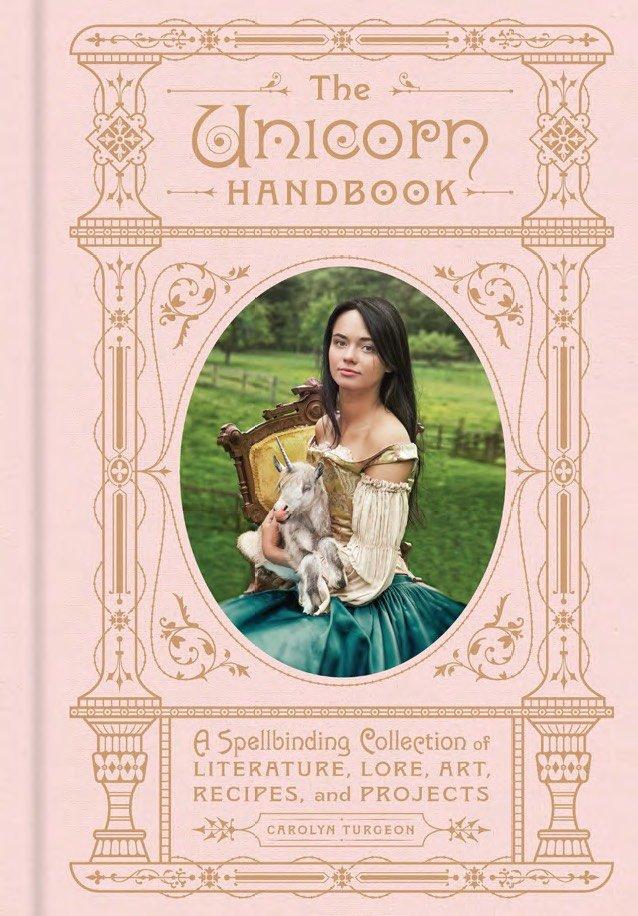
On the morning of the shoot, I drove to Mario’s home, Emma’s Daisyhill Farm in Glenelg, Maryland, and met photographer Steve Parke, model Sarah Bentman (who also appeared on the cover of our autumn 2018 Outlander issue), and hair and makeup artist Nikki Verdecchia. I was also armed with a goat-proof yet super glamorous gown from Jill Andrews.
Mario proved to be a bit of a diva, but that’s to be expected when dealing with unicorns. There are about 5,000 outtakes of Mario squirming in Sarah’s lap and occasionally trying to make out with her and generally doing anything other than what we wanted him to do, but the law of averages demanded that among those thousands of outtakes, Mario would look appropriate in a few. And by appropriate I mean fabulous.
At that stage, there was some disagreement about what needed to be done to make Mario, through the wonders of Photoshop, more unicorn-esque. Some felt he should be more baby goat-ish, others more horse-ish. Some that he should stay more dark, others that he should gleam a more silky white. On the following page you can see Mario’s gorgeous transformation from baby goat to unicorn, in a series of images by Steve Parke, as well as the resulting masterpiece.
A week after the shoot, I went back for goat yoga at the farm, though I accidentally didn’t do any yoga and mostly just hung out with my new best friend.
What does Mario think of the final cover? Sadly, now that he’s famous, he no longer returns our calls.
